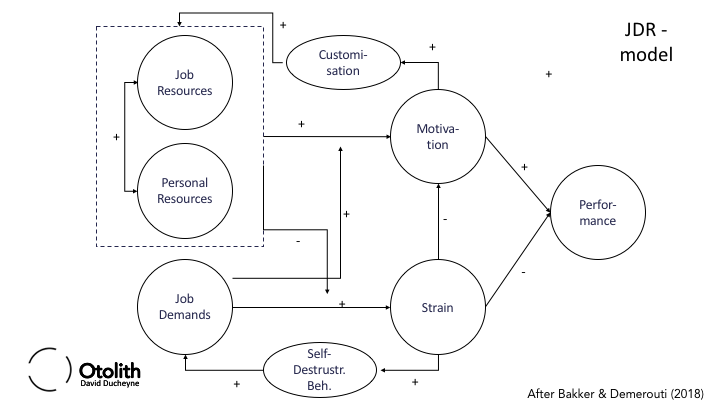Well-being is an essential part of any people strategy.

The Gas Law
It always amazes me how we seem to neglect a simple law of nature.
(a) What happens when you increase temperature? Pressure goes up.
(b) What happens when you increase pressure? Temperature goes up.
This is a simple application of Guy-Lussac’s Gas Law:
P/T = k
(Pressure over Temperature is constant)
So if a tyre heats up because of warm weather or because you drive the car, the pressure in the tyre goes up. And if you don’t do anything the tyre might explode. The only ways of dealing with it is (1) to stop driving, (2) to put the car in the shade, (3) to release pressure by opening the piston and (4) to invest invest in a new stronger tyre to replace the old tyre.
Work-Pressure
You could use this law as a metaphor for what happens in organisations and the impact on Well-Being. What happens when temperature goes up (fear, uncertainty) temperature rises. People feel the pressure and react to it.
What happens when pressure increases (more things to do, change, …) then temperatures goes up (people feel uncertain, tired (no pun intended) or even exhausted.
This is a simplified application of Bakker’s Job Demands Resources (JDR) model. People will feel strain (temperature) when there is increased workload (pressure). Unless there are resources that provide a counterweight. These resources bring energy and finally motivation. There are both personal and contextual resources.
The solution when this happens is:
(1) give people time to recover or to stop working (possible?), (2) provide measures to cool the system down, like temporary reinforcement or work reschules, (3) give people the resources to handle the pressure themselves, (4) invest in contextual and personal factors that increase resilience.
And you need to work on all aspects. But if you work on (3) and (4), you might not need to invest in (1) and (2). You cannot give someone a course on mindfulness to strengthen personal resilience, without looking for contextual measures to enhance overall resilience.
Work harder
People can work a lot if you give them the right and supportive context. But very often the phrase that comes after the “if” is forgotten and all that remains is:
Our people can work harder
Leaders can massively influence the contextual resources and leaders can support people to develop personal resources. And of course one could work on the workload itself. The latter lever is not always available, or there is no willingness to intervene. Working harder is a basis for growth, many people think. But it’s not a sustainable way of thinking as there are limits to working hard(er).
We can make work a source of energy by focussing on job quality, social support, easy organisation design, meaningfulness, autonomy, leadership, …
And we can help people develop their own energy sources through personal development.
So when you know that pressure will go up, you can anticipate the increase of temperature. It all boils down to providing resources that have a positive impact on the strain reaction. And if there’s an increased temperature without a clear cause, you will need to investigate.
If you do not anticipate you will not only increase the strain reaction, you will also destroy motivation. And if that is happening, you might be worse of.
The Right Amount
It’s not easy to anticipate. Often organisations and their leaders feel compelled to move fast and have no time in preparing the change. The collateral damage might be high.
So the challenge lies in finding “the right amount” and “the right timing“. There’s the right amount of work and there’s the right amount of well-being protecting and enhancing measures. It’s not an easy balance to find. Both personal and contextual resources evolve over time. Reactions to measures are individual. Well-being is individual. And so even when you have implemented a well-being program with the best of intentions, or even when you have prepared a change meticulously, it still might not suffice for one and be an overkill for the other employee.
The answer to this lies probably in giving the handle to the ones in the driver’s seat and making sure they can impact the choice of road and the speed even when they cannot decide on the direction.
Think of the Gas Law: temperature and pressure are related. If one goes up, the other follows.
And remember
There’s always something you can do to make it better.
I hope this blog makes you think. Share it if you like it.





